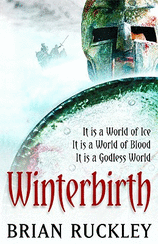 entirely on biscuits secreted in her handbag. She now resides in the Colonies, surrounded by a harem of Armenian lovers, where she insists on tea imported directly from London and cats that pee into toilets. She is fond of teeny tiny hats and tropical fruit.
entirely on biscuits secreted in her handbag. She now resides in the Colonies, surrounded by a harem of Armenian lovers, where she insists on tea imported directly from London and cats that pee into toilets. She is fond of teeny tiny hats and tropical fruit.Here she shares her thinking about casting a filmed adaptation of Soulless, her first book:
Soulless is a comedic take on the urban fantasy genre set in Victorian London. With that kind of elevator pitch, you can probably guess I'd skip Hollywood and take less money if I could sell it to the BBC as a mini series. I'd settle for a fist-full of unknowns so long as it came out as well as their Cranford adaptation, but my assignment is to cast my ideal film, so here were go...Learn more about Soulless and its author at Gail Carriger's website and blog.
Our Intrepid Heroine
Alexia Tarabotti, London's only preternatural, is an Italian-looking spinster with no soul, a big mouth and, quite frankly, even bigger nose. Visually, I modeled her off of Italian actress Sabrina Impacciatore, but Sabrina seems a little too regal for the role. Perhaps Claudia Black might be better suited to running around whacking obstreperous vampires willy-nilly with a parasol, but that girl's gotta eat about ten cream teas first, then we'll talk.
Werewolves of Note
For our hero, an oversized scruffy Scottish werewolf, I'm going to deviate from the expected--Gerard Butler--and pick Sean Bean (with dark hair and color contacts) or perhaps James Purefoy. All are big guys who manage to emit a general air of clumsy confusion combined with slightly too wide smiles that look as though they might, just possibly, tear out your throat if they could just remember what that other thing was they wanted to do first. For Professor Lyall, Lord Maccon's long-suffering beta, I'm choosing Kevin McKidd of Rome fame. And for Lord Maccon's claviger, the irreverent Tunstell? Gotta have Alan Tudyk hamming it up with shockingly red hair and a penchant for singing bad opera at inopportune moments.
Vampires of Interest
Lord Akeldama is Alexia's dearest friend, a gay vampire in charge of a spy network the Scarlet Pimpernel would envy. I modeled him (of course) off of Richard Chamberlain circa The Slipper and the Rose. I'm thinking, Paul Bettany. He stripped starkers for A Knight's Tale so I figure he's probably open to most possibilities. In the enemy camp, I'd like Jennifer Ehle to portray Countess Nadasdy. Elizabeth Bennett may seem like an odd choice for a vampire queen, but the countess is a rosy-faced shepherdess type. I'd surround her with three over-dramatic vampire males, each more cape-swirling than the last: Jason Isaacs as Lord Ambrose, Richard E. Grant as Dr. Caedes, and Gary Oldman as the Duke of Hematol.
Mundanes of Relevance
Ivy Hisselpenny is Alexia's foil and female BFF. I had the hardest time casting her until I remembered Melanie Lynskey who's perfect. As for Alexia's outrageously impossible family? I'll take one each of the following: Squire Loontwill - Hugh Laurie, Mrs. Loontwill - Imelda Staunton, Felicity - Jo Joyner, and Evylin - Kimberley Nixon. We mustn't forget Floote, the oft put-upon butler who has Alexia's best interests at heart. I choose the lovely Philip Glenister. I can think of no better straight man in the business right now. For Mr. MacDougall, Alexia's timid American beaux (I know, I know, an American - shocking!) I'd slip in Kevin Smith, just for a lark. And for Mr. Siemons, our scientist of suspicious motivations? Who could beat out a pipe-puffing, mutton-chop sporting Stephen Fry?
--Marshal Zeringue















